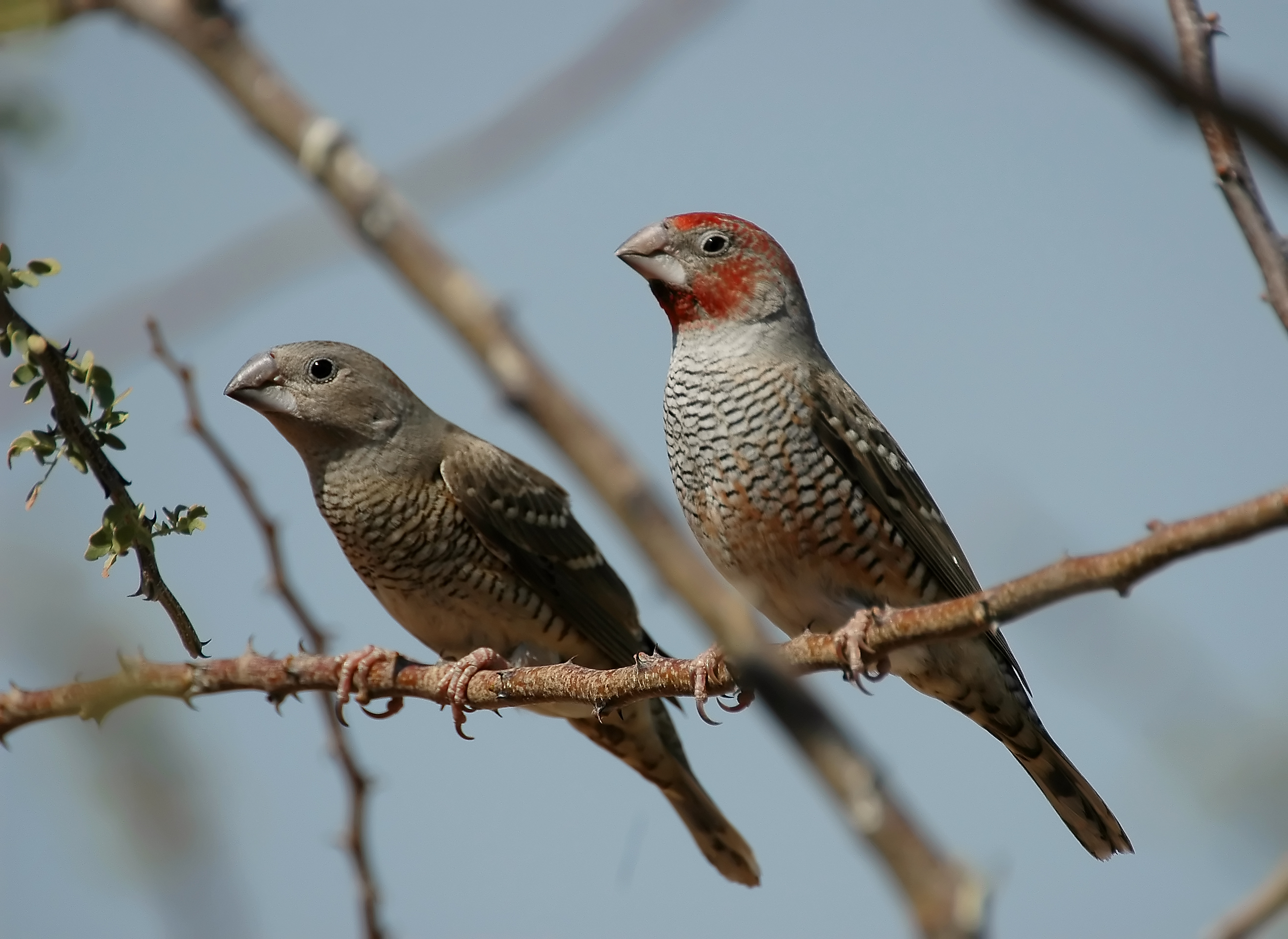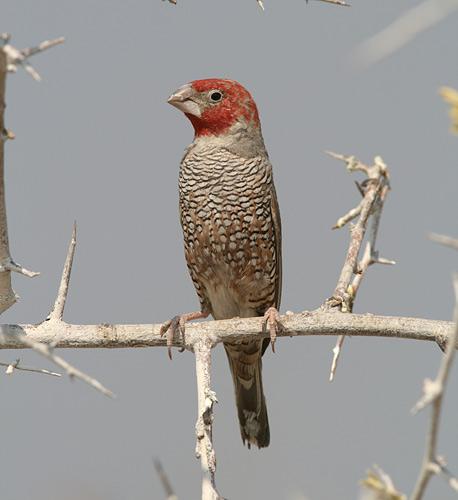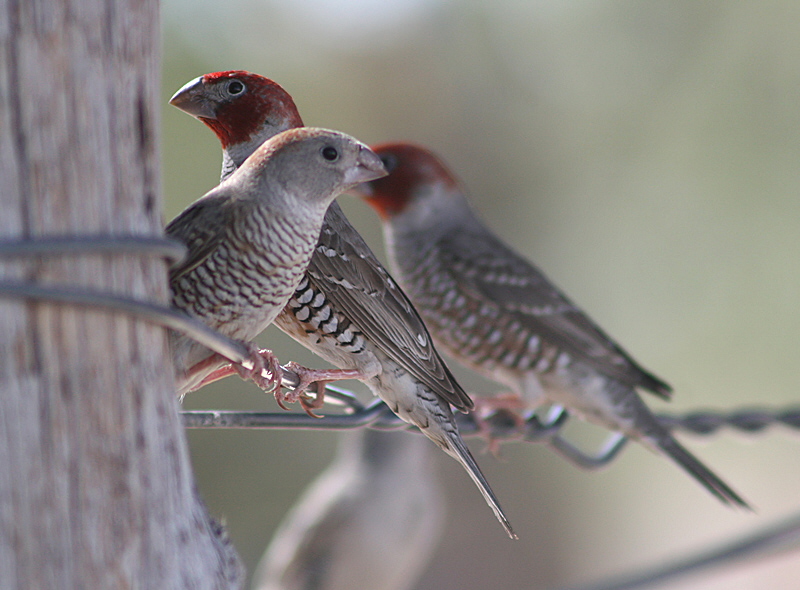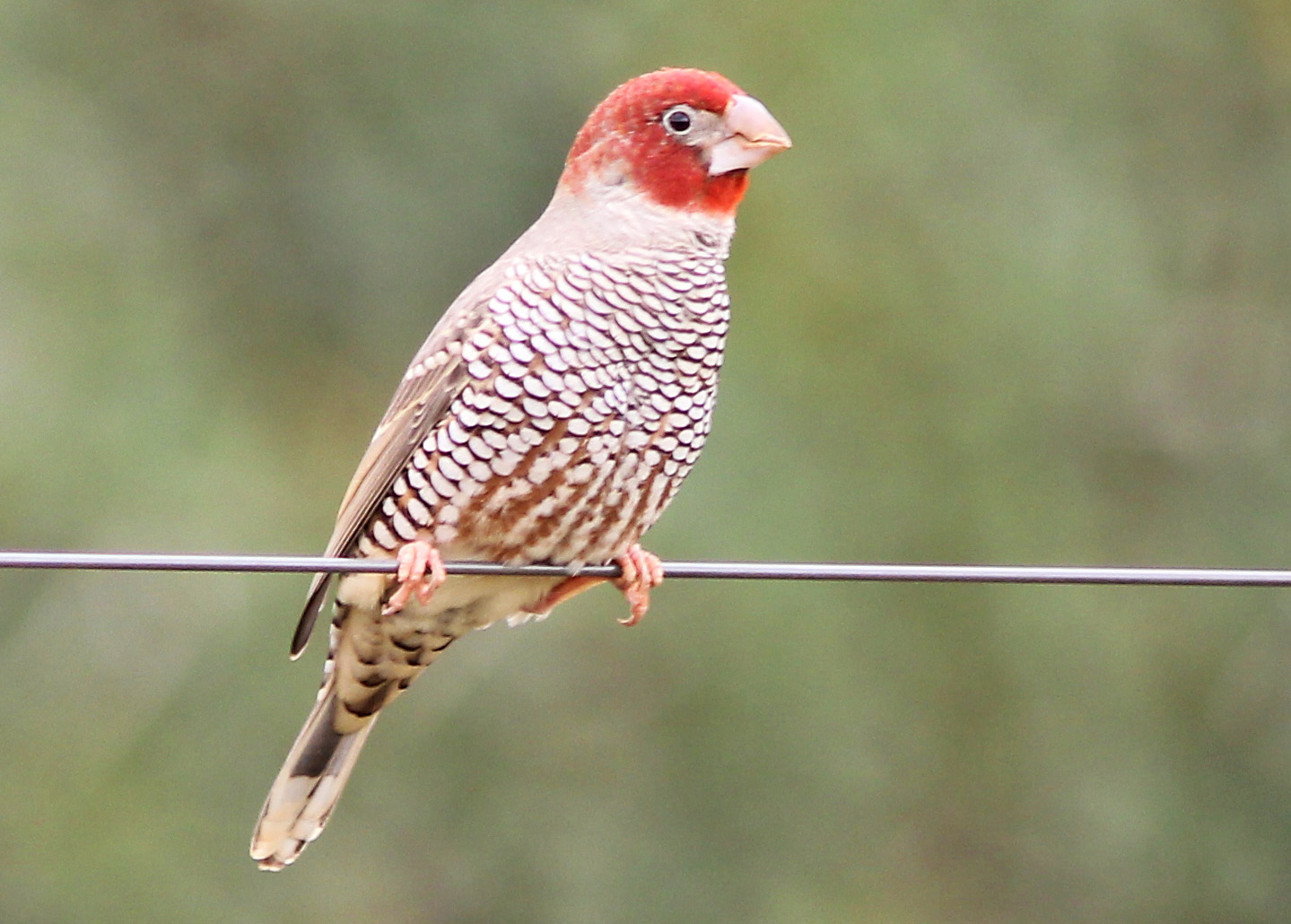
Amadina erythrocephala
SUBFAMILY
Lonchurinae
TAXONOMY
Loxia erythrocephala Linnaeus, 1758.
OTHER COMMON NAMES
English: Red-headed weaverfinch; French: Amadine а tкte
rouge; German: Rotkopfamadine; Spanish: Capuchino de
Cabeza Roja.
PHYSICAL CHARACTERISTICS
4.7–5.1 in (12–13 cm). One of the more robust estrildids. The
red-headed finch, as its name implies, has a bright, blood red
head. Lores are buffish. The lower throat through the belly is
marked with black and white scalloping with some chestnut
feathers in the middle belly and then off-white in the lower
belly areas. Females lack red on the head but may carry a few
red feathers. Juveniles are a paler version of the female.
DISTRIBUTION
Southwestern Angola, east to western Mozambique, south to
South Africa.
HABITAT
Inhabits semi-desert, savanna, dry grassland, thorn scrub, and
the edges of cultivated and inhabited areas.
BEHAVIOR
Found in small flocks. The call is a “chuk, chuk” or, while in
flight, a “zree zree.” The song is a series of soft buzzing notes.
FEEDING ECOLOGY AND DIET
This species both walks and hops as it feeds on the ground on
a variety of seeds and insects.
REPRODUCTIVE BIOLOGY
This species uses old nests of weavers (e.g. sociable weaver
[Philetairus socius]) or sparrows, or sometimes holes in buildings.
Three to eight white eggs are incubated for 12–14 days.
CONSERVATION STATUS
Not threatened.
SIGNIFICANCE TO HUMANS
Occasionally kept in zoos and aviaries but not nearly as commonly
as its relative the cut-throat finch (Amadina fasciata).
Other popular Animals
Photo Gallery of - Red-headed finch




 Animalia Life
Animalia Life